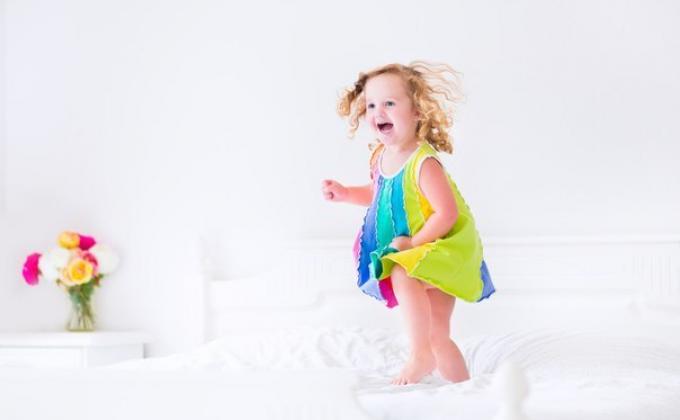
For the full perception of objects and phenomena of the surrounding world, sensory (sensory) development is of great importance. It is on this basis that memory, thinking and imagination will then develop, even readiness for school.
You can say as much as you like – "sour", "bitter", "hot", but until the child tries it himself, he will not know what it really is. And on the one hand, this is normal: such a sensual experience should be passed through yourself, only then it matters for the development of personality.
On the other hand, such entertainments can be unsafe both for the child himself and for the surrounding objects: give the baby free rein, he will "check" all the dishes for strength, and all the puddles for depth.
Therefore, direct the energy and thirst for knowledge of the child in a peaceful way – play sensory games!
1. Spread out / pick up by color / shape / size.
Arrange the figures cut out of colored paper or cardboard by color, sort them by shape (circle, triangle, oval) or size – large to large, small to small.
Ask the child to show the same small blue square or large yellow circle as in your hands.
2. Find the same / find a similar one.
On a walk or indoors, look for items of your chosen color: houses, cars, leaves, clothing items, furniture items. You can search for everything small or large. At the same time, the child will learn the concept of relativity better – compared to you, the bus is big, and compared to the house it is small.
Also look for objects that resemble geometric shapes in shape – a house like a rectangle, a puddle like an oval, a sandbox like a square, etc.
3. Colorful fantasies.
Pour plain water into several cups and show the child how it turns into different colors if you lower a brush with paint of any color into it. Try to mix different colors, getting new and new shades.
4. Big/small.
Let your child try on your clothes – they will be too big for him, because he is still small, and yours is too small for him, because you are already big.
Try to hide toys of different sizes in the cam – small ones will easily fit, but large ones will not.
5. What does it sound like?
For each game, you can take 2-5 items, increasing their number depending on the age of the child.
Rattle, knock, call the selected items in front of the baby. And then, having already turned away, let him determine only by ear what sounded – a bell, a spoon on the table or a package rustled?
6. Listen to how it sounds!
Use all the possibilities to draw the baby's attention to this or that sound of the object – how the leaves rustle, the rain drums on the glass, the elevator rides, the dog barks, the drill works, etc.
A more complicated option is to try to give each sound an emotional coloring: for example, a drill sounds dissatisfied, an elevator rides tiredly, thunder thunders angrily, a tambourine sounds fun, and water pours with laughter.
7. Music games.
The child's task is to go fast or slow, depending on how fast you clap your hands or hit the tambourine.
It is not an easy task for very young children to stop when the music stops, especially if it sounded fast and energetic before that.
8. Mmm... how it smells!
Pay your baby's attention to a variety of smells – like vanilla pie from the oven or fresh bread in the store. What are the smells hovering in the meat and sausage department, how pleasant is the smell of fresh linen, book pages and a blooming flower on the window.
9. What is the touch?
To develop tactile sensitivity, invite the baby to touch a variety of objects, paying attention to what they feel like: smooth, rough, fluffy, hard, prickly, soft, cold, hard, warm, etc.
Touch everything you can: fabric, clothes, furniture and toys, tree bark and leaves on the street, stroke your or someone else's pet or parrot, try to pick up water, hide your palms in flour or cereal, roll out a spool of thread and a ball of wool, tear a piece of paper and touch a cactus.
10. A wonderful pouch.
A very well–known game, common in preschool institutions - the child has to find and pull the object out of the bag by touch.
You can put anything in this bag – both three-dimensional geometric shapes, and different pieces of fabric and thread, and a toy, and even fruits and vegetables.
11. Who is it?
The child has to guess by touch which family member's hand he is touching now. Be sure to switch roles with the baby.
12. Oh, how delicious!
While eating, pay the child's attention to the flavors of the dish. Offer to try new things – lemon, pepper, garlic, mango, avocado, of course, in small quantities. Ask the baby, closing his eyes, to guess what he is eating – lemon, apple, bread or cookies.
13. What has changed?
Put several toys in a row in front of the baby, remembering their location, the way he will turn away, and turning back, he will guess which toys have changed their place.
Have fun playing games!
